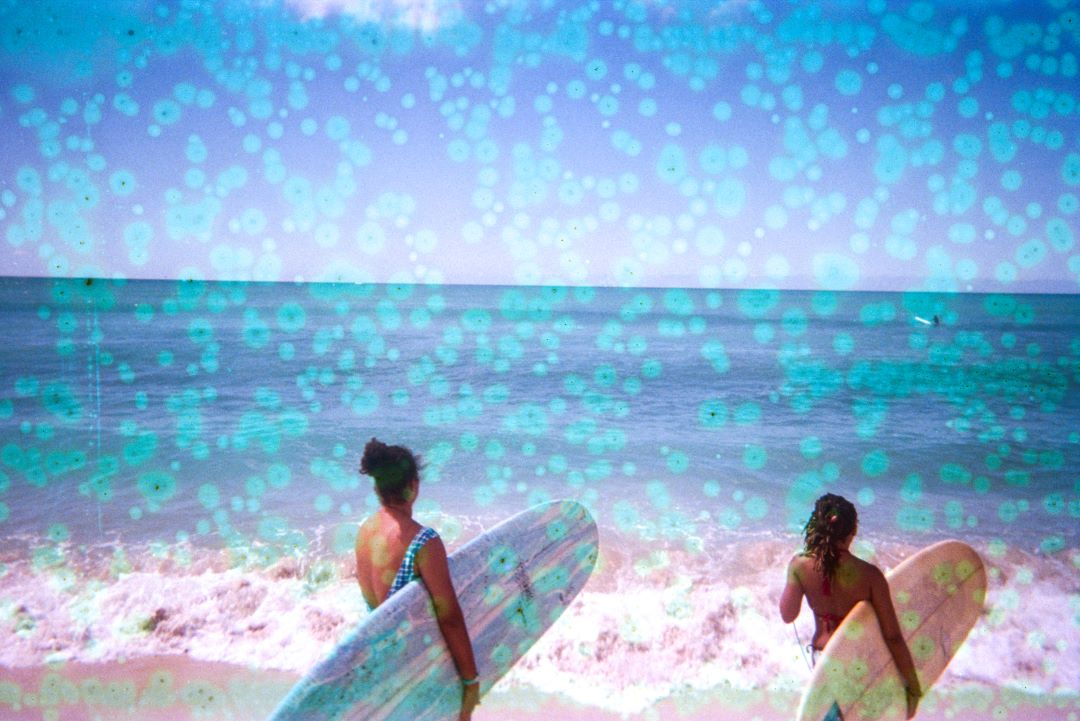The silhouette of a surfer inked onto marbled velvet, surrounded by an embroidered excerpt from Gabriella Angotti-Jones’ “I Just Want To Surf,” read:
“I long for the days where my body can interpret waves faster than I can process my thoughts, where I can become one with the water. I don’t want the water to be a place of pain anymore. I want it to be a place of revelations.”

The multimedia piece was specifically crafted for the exhibition “Whose Waters?” on display at the San Luis Obispo Museum of Art (SLOMA) from July 13 to Oct. 20. It is one of the first pieces museumgoers see when walking through the art gallery.
The excerpt discusses how the culmination of artworks can inspire surfers to transform the ocean into a shared source of joy for communities around the world.
The exhibition features nine artists of different media formats, ranging from locally shaped surfboards by Shea Somma to Tracey Moffatt’s film “Heaven.” Each artist came together to invoke dialogue about how to diminish localism, elitism and discrimination to make the ocean a place of unity for the surf community and beyond.
The concept has been in the mind of chief curator Emma Saperstein since she moved to San Luis Obispo in 2016 and started her surfing journey. With The Drum’s “Down By the Water” on repeat, she found a nurturing community within the ocean. Going forward, her goal was to create an exhibition that allowed people to think about the space they create for themselves and other surfers concerning the much larger legacy superseding them.
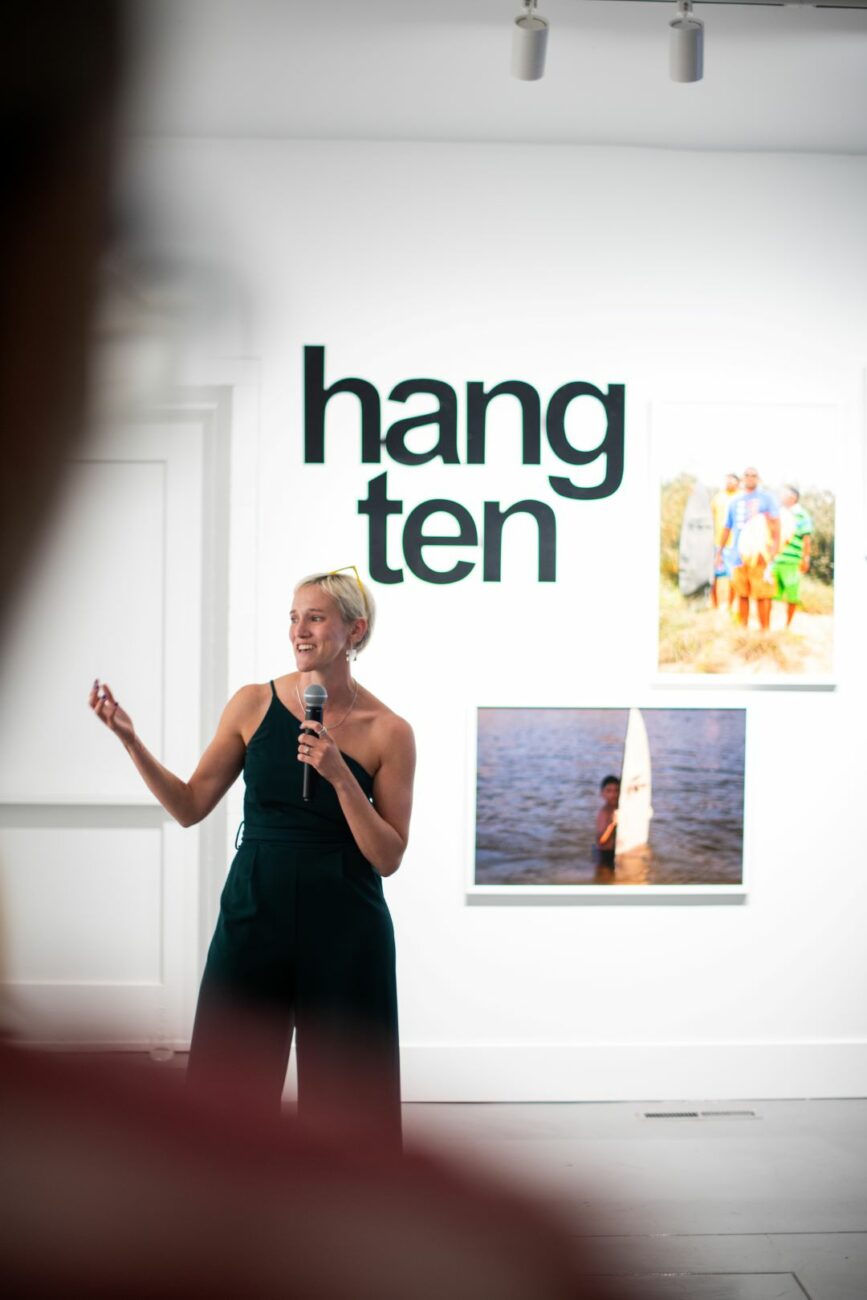
Providing visibility for Black-and-brown surfers along with presenting feminist and queer voices within a historically colonized practice was a primary focus in the development process. Considering that surf media is commonly centered around white cisgender men, curators made a conscious effort to include art from a variety of perspectives that generated dialogue among surfers and non-surfers alike.
“I really wanted artists who were thinking critically about [surfing] to be a part of the show,” Saperstein said.
“It was, like, trying to find artists who really were inviting questioning and conversation in their content.”
The works
The exhibition is anchored by the work of Gabriella Angotti-Jones, a Los Angeles-based photojournalist whose seven photographs and two fabric pieces explore her experiences as a Black surfer. As she explored the waves in a predominantly white California beach town, Angotti-Jones experienced discouragement and stopped surfing at 12 years old due to feelings of exclusion from the locals.
After rekindling her relationship with the ocean more than 10 years later, she found a community of wonderful people who allowed her to reestablish surfing as a healing force within her life.

“I felt so comforted by the water but also so vulnerable and hyper-visible as one of the few black people in the water, so I feel like I’ve been able to kinda take that back and own it and gain more confidence in myself and my surfing,” she said.
Angotti-Jones’ work is a reflection of her complex relationship with the ocean, showcasing joyful photography of her community inspired by 1990s and 2000s surf culture, juxtaposed with writings that resemble windows into the melancholic periods of her life.
Her work serves the larger purpose of analyzing the ocean as a sacred — and more importantly — a shared space where surfers don’t have to question if they belong.
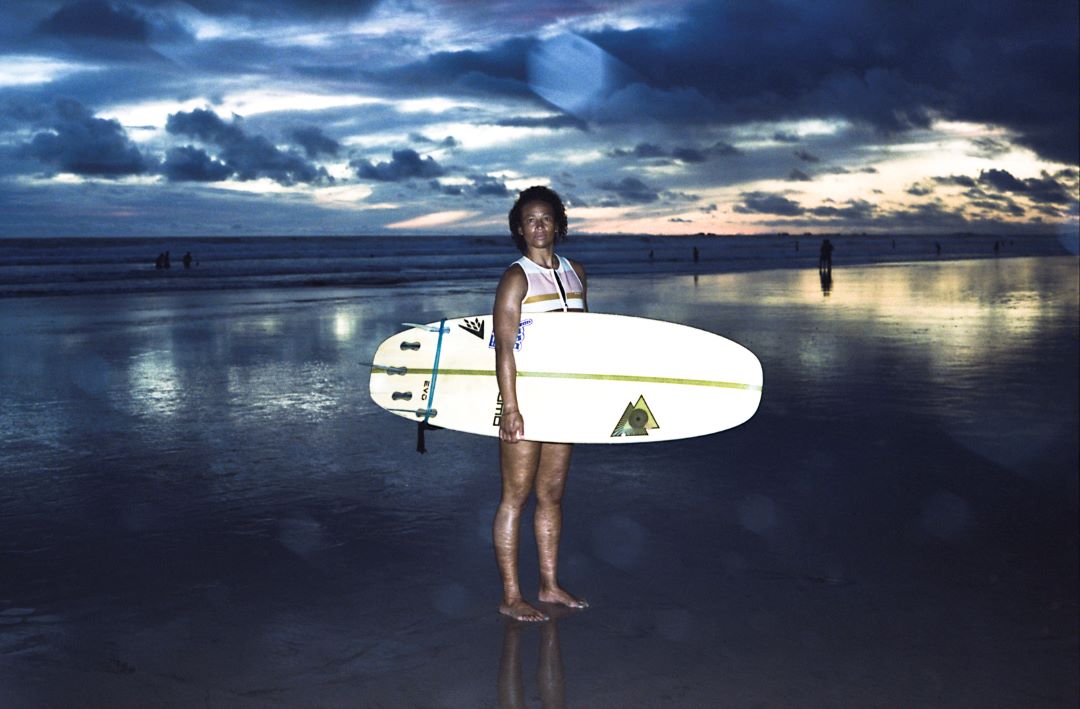
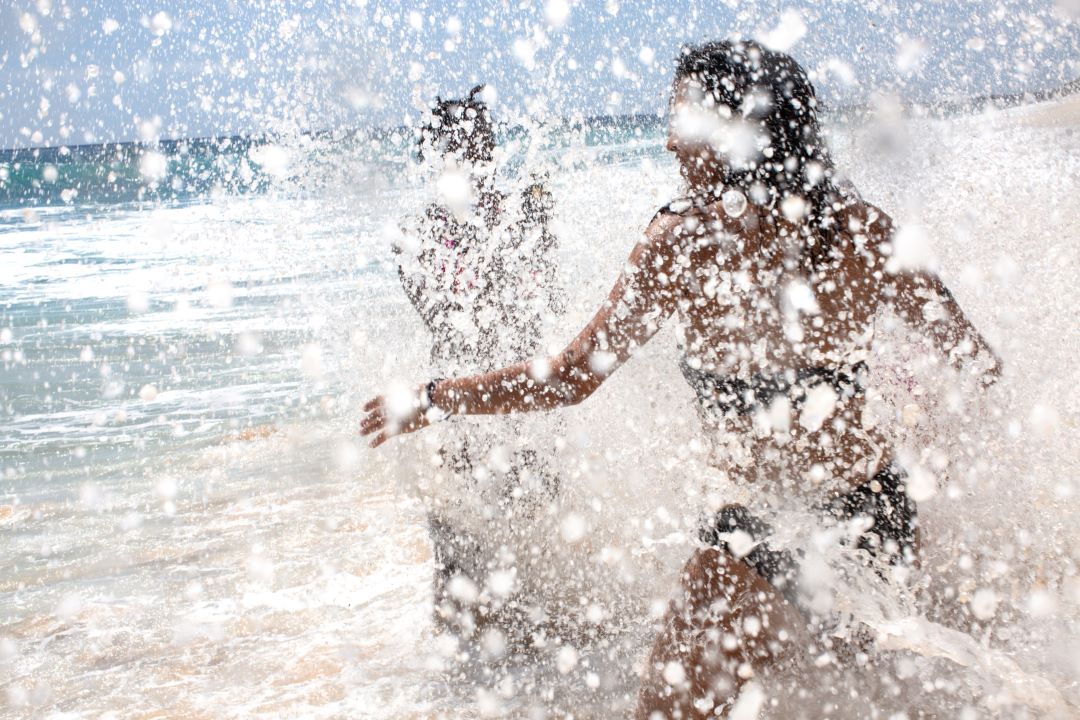

“I would want to help people be understood and I want to communicate people’s power and people’s resilience through photography,” she said.
In front of Angotti-Jones’ photography is a soft board crafted by San Luis Obispo local Shea Somma, one of two boards in the exhibition mirroring the same themes of elitism and how judgments are cast based on what surfboard one rides.
Titled “Softboard #1” and “Softboard #2,” Somma handcrafted a traditional board in the style of a cheap mass-produced soft-top surfboard, which is primarily used by beginners. He then took the mold of a high-performance shortboard and filled it with foam rubber to make it the lowest quality possible; a “visual joke” as he called it.
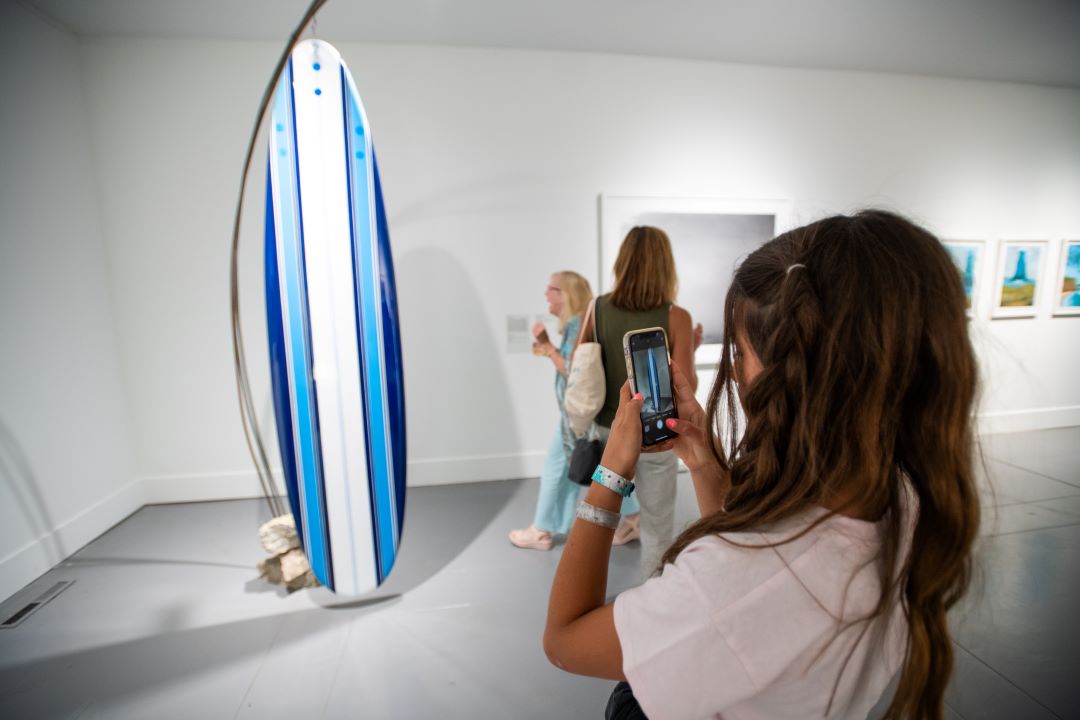
Three of Catherine Opie’s photographs also hung nearby, with each picture being shipped from Korea to San Luis Obispo, marking the museum’s first large international shipment. As for the series “From Your Shore to My Shore,” three differently aligned skylines are depicted, which were taken when Opie sailed on a shipping container from Long Beach, CA to Korea.
Established photographer and videographer Joni Sternbach has a collection on display as well. Her photographs have been showcased at the Museum of Modern Art, the Los Angeles County of Modern Art, the Maison Européenne de la Photographie in Paris, France and beyond.
Though one of her long-term projects involves portraits of surfers in tintype, the native New Yorker’s experience with the surf community was initially rocky, as she found surfers spoiling every photo of the ocean she tried to take. Years later, when her vision was directed toward a group of surfers cheering together as the clouds lifted, Sternbach came to realize she shared the ocean with them and could learn to coexist with the wave riders.
Her tintype photography brings audiences across the globe as she photographs surfers in Australia, Hawaii, France and further.
Videography was showcased with Tracey Moffatt’s film “Heaven” which explores surfing through the female gaze, more specifically the ritual of changing into wetsuits after arriving at the beach. The documentary brings up the subjects of voyeurism and sexualization in the context of the surf community, as the questions of private versus public spaces arise through the normality of changing on the beach for surfers.
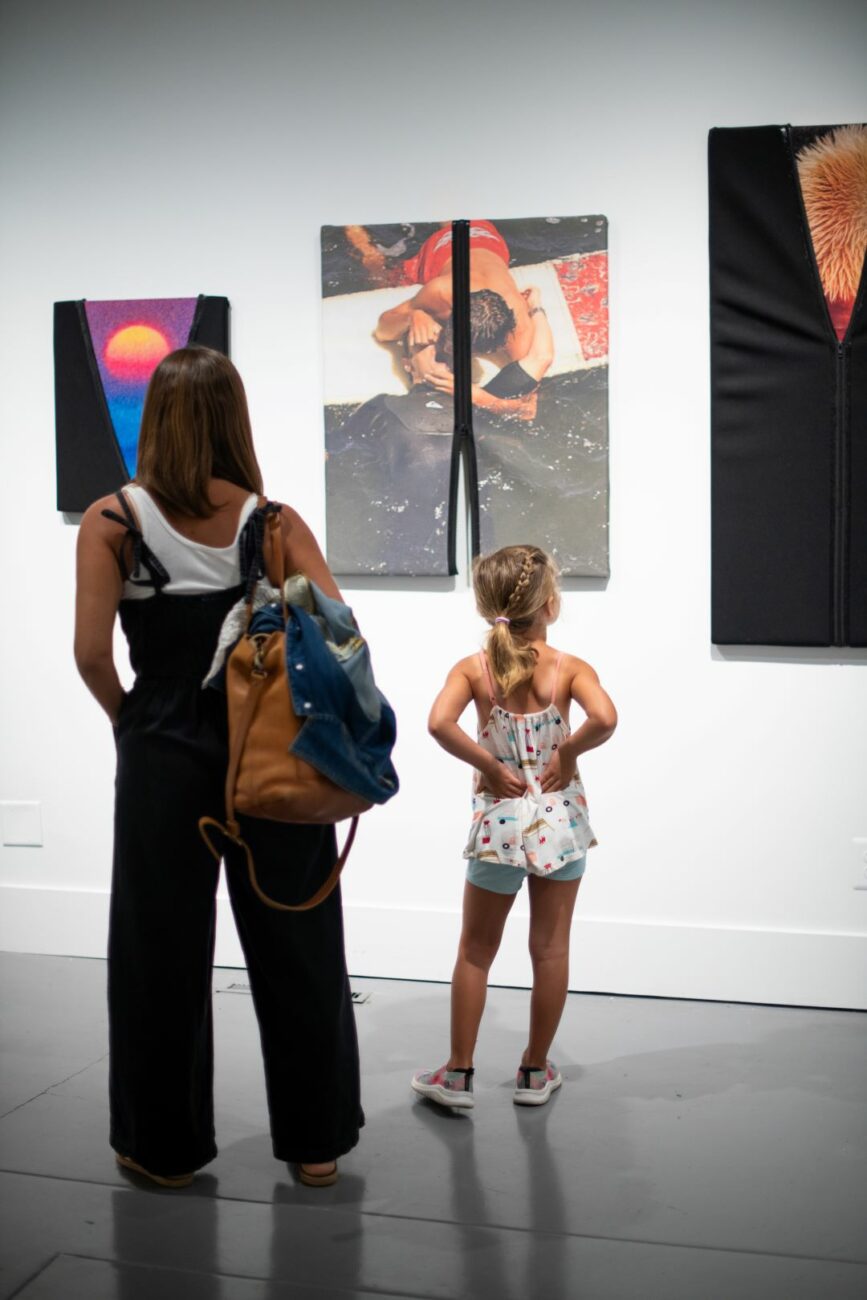
This theme of identity is explored through Stephen Milner’s “Neoprene Violence.” The assortment recontextualizes images from pre-1980s homoerotic and surf magazines, and displays canvases zipped up with vintage neoprene, the material wetsuits are made of. His artwork disassembles the editorial trope of the heteronormative gaze within surf communities and alternatively displays the world of surf through a queer lens.
On the opposite wall, five large words were intentionally plastered and read, “Hang ten” and “We grew here,” as part of Vernon Ah Kee’s repurposing of slogans from the Cronulla Race riots. The series of events took place in Sydney, Australia during the early 2000s, when the question of beach possession sparked tension between local Australians and the Lebanese community.
Stills of Indigenous surfers from his 2009 video “cantchant” are framed as they hold up boards painted in the colors of the Australian Aboriginal flag, reclaiming the chant “We grew here, you flew here,” used towards Indigenous surfers that occupied the water in Australia.
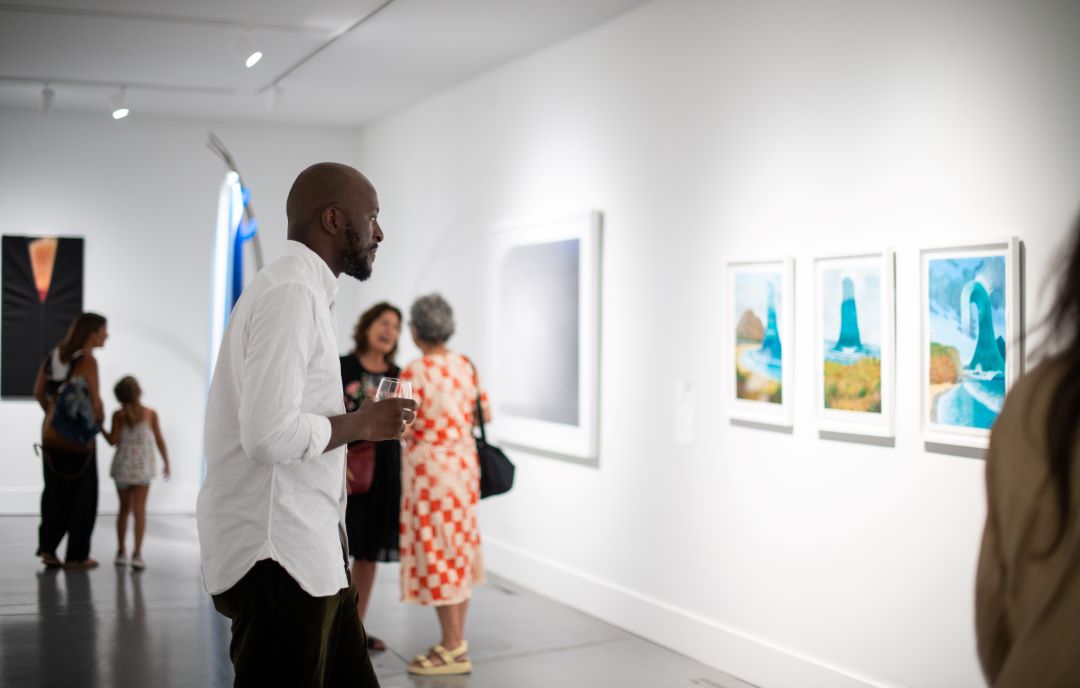

Also inviting critical thinking as a response to his collection, Sandow Birk contributed three gouache prints of whimsical waves crashing in a surrealistic manner, one of which is set at the local beach, Morro Bay. His work typically tackles sociopolitical issues and while his work in the show is not as direct, Saperstein said, “thinking critically and politically about the context of his work brings that energy to the space,”
Finally, an excerpt from Kunyalala Ndlovu’s “Afro Surf” was displayed in the center of the museum, describing a surfer’s navigation journey as a metaphor for life in a larger context; just as everything naturally falls into place, the wave you are searching for might appear when you least expect it.
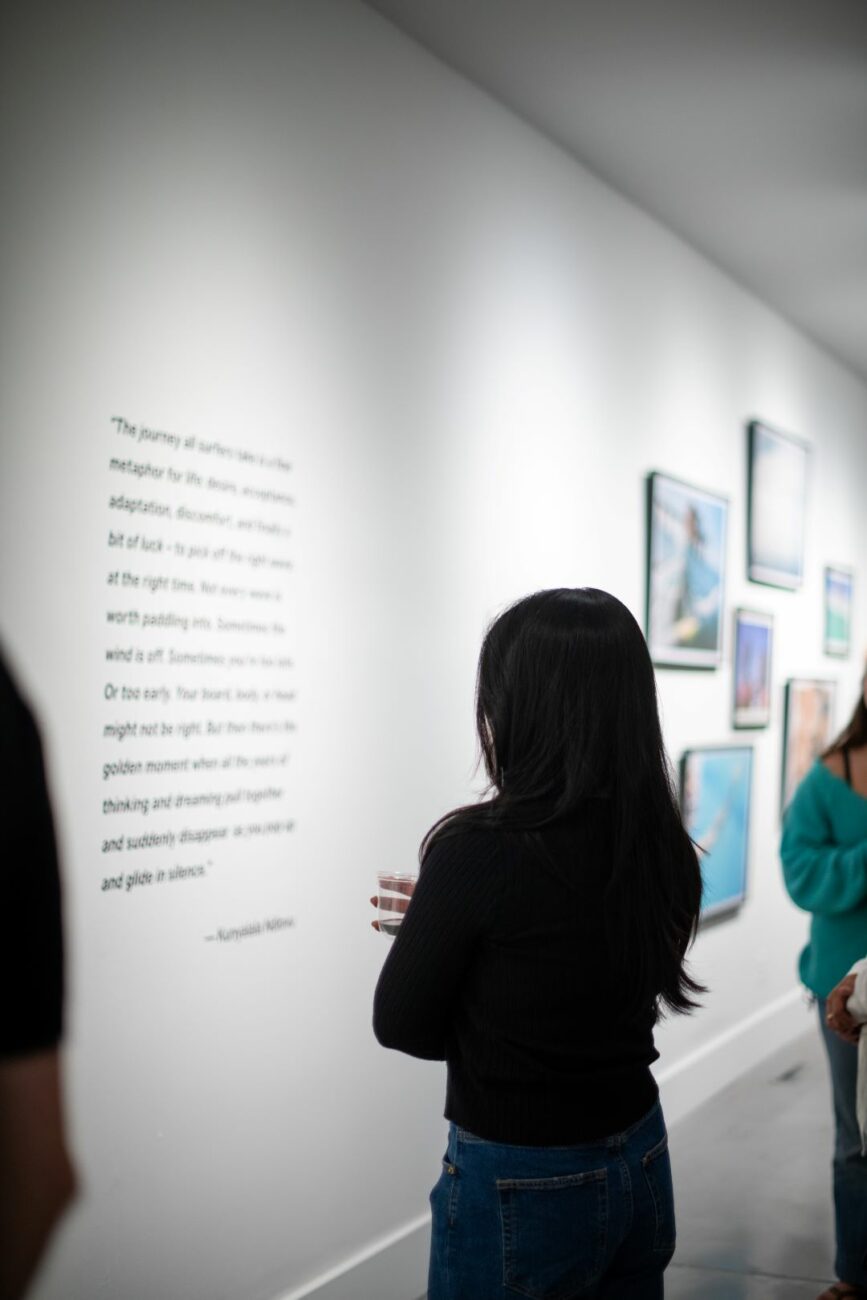
The artists’ collective visions join to establish a lens through which surfers and non-surfers can examine their global relationships with the ocean and explore how it can serve as a source of unity in a divided and complex society.
On July 13, Saperstein moderated an artist panel where five of the artists discussed their works and the overarching purpose of the exhibition.
“It’s such a great privilege to stand…to sit up there amongst these brilliant artists, surfers, thinkers, writers and have a really vulnerable conversation,” Saperstein said.
The outreach of the museum has been larger than just the artwork, with a local surfboard swap, an Indigenous Surf Film screening of “Haagua,” a Q&A with Native Like Water and an “Indigenous Surfers Reflecting on Art and Sovereignty” panel being held in programming with the exhibition.
As the “Whose Waters?” exhibition reaches its end, the message exemplified remains a prominent conversation throughout the surf community.
“I want people to come to the show and the impact to be the desire to be better stewards of the ocean and of each other,” Saperstein said. “It’s so hard to find space for vulnerable dialogue and generative dialogue and I hope that the museum continues to be that kind of space.”
The San Luis Obispo Museum of Art remains open five days a week and free for the public, with a new exhibition focused on the abstracted landscape paintings of Whitney Bedford coming on Oct 26.

